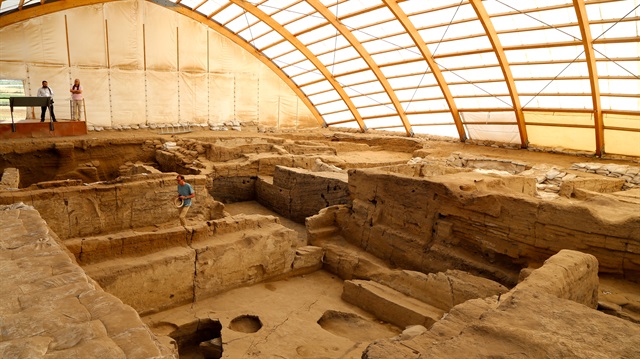
Seen as world's oldest-known human settlement, Neolithic site of Catalhoyuk was added to UNESCO's World Heritage List in 2012
A member of UNESCO’s World Heritage List, the 9,000-year-old prehistoric site at Catalhoyuk, central Turkey sheds light on the deep history of humanity.
Home to some 8,000 people in the Neolithic age, Catalhoyuk is seen as the world’s oldest-known human settlement.
Today it is an archeological site for scientists studying the social structure, diet, and clothing of ancient people.
It was 1960 when the late British archeologist James Mellaart conducted the first-ever excavations at the site, Abdussettar Yarar, culture and tourism director for the central Konya province, told Anadolu Agency.
Significant discoveries were made over the last 25 years during excavations led by Ian Hodder, an anthropology professor at Stanford University, he added.
Recent discoveries say Catalhoyuk was one of the first places that people made earthenware containers as well as cultivated wheat.
Wall paintings reflecting a religious sensibility are also among the discoveries, as well as graves and skeletons discovered inside houses.
The excavations also found that the people of Catalhoyuk were not taller than 1.7 meters (5.58 feet) high, though apparently stronger than modern-day people.
Yarar said interest in the site from both Turkish and foreign tourists grew in 2012, when it was added to UNECSO’s World Heritage List.
“Every year, scores of visitors come to the excavation center and learn about the new discoveries,” he said.


